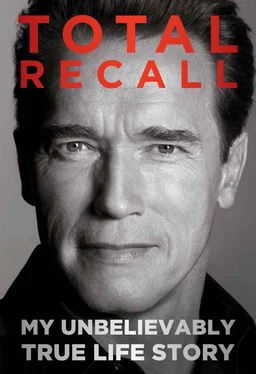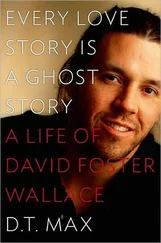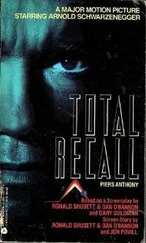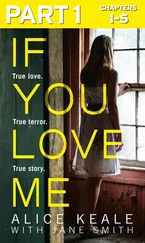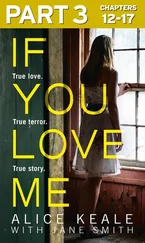The world certainly noticed the contrast between the action in California and the gridlock in DC. Time magazine put a picture of New York mayor Michael Bloomberg and me on the cover in June over the headline “Who Needs Washington?” The point of the story was that Bloomberg’s city and my state were doing the big things that Washington failed to do. Washington had rejected the Kyoto Protocol to combat global warming, but in California we passed America’s first cap on greenhouse gases. The administration had rejected stem cell research, but in California we’d invested $3 billion to promote it. The administration turned down our request for money to repair our water system’s levees, but we’d pushed through billions of dollars in bonds to protect the levees and start rebuilding our infrastructure. I told Time , “All the great ideas are coming from local governments. We’re not going to wait for Big Daddy to take care of us.”
Bloomberg and I both understood the power of reaching across borders. In May he chaired the second climate summit of mayors of more than thirty of the world’s largest cities, with the aim of slashing carbon emissions. That summer he and I allied with Pennsylvania governor Ed Rendell, a Democrat, to form Building America’s Future Educational Fund, a nonprofit to promote a new era of US investment in infrastructure. And I was already making a series of pacts with other countries and states in the areas of trade and climate change. After our state passed the greenhouse gas cap in the fall of 2006, which included the toughest-ever fuel-efficiency standards for passenger cars registered in our state, we signed a climate alliance with the province of Ontario, Canada, just across the river from Detroit. This infuriated some of the automakers’ groups, and a Republican congressman in Detroit even put up a billboard that said: “Arnold to Detroit: Drop Dead.” I told the media my response: “Arnold to Detroit: Get off your butt!”
My willingness to work across party lines alienated conservative Republicans. If they thought I wasn’t really a Republican for taking on climate change, they really lost it when I took on health care reform. In September I opened a party conference near Palm Springs by taking another shot at narrow partisanship.
“We are dying at the box office,” I told my fellow Republicans. “We are not filling the seats. Our party has lost the middle, and we will not regain true political power in California until we get it back. I am of the Reagan view that we should not go off the cliff with flags flying.” I noted that I had learned this the hard way in 2005, when the unions rallied voters to crush my ballot initiatives.
“The road to our comeback is clear,” I said. “The California Republican Party should be a right-of-center party that occupies the broad middle of California. That is lush, green, abandoned political space that can be ours.” I closed with a pledge to work hard to help the party achieve this. But the speech went over with a thud. Polite applause, nothing more. They didn’t like the lush, green center; they wanted to be out on the cold, mean fringe.
The next speaker was Governor Rick Perry of Texas, a right-winger. He pooh-poohed climate change, condemned infrastructure projects as runaway government spending, and declared that the Republican Party was on a roll. The audience went wild. With the 2008 presidential election just a year away, I wondered if Ronald Reagan was prophetic: “rolling off the cliff with flags flying” was just where the Republicans were headed.
CHAPTER 28
The Real Life of a Governator
BESIDES BEING GOLDEN ANDprosperous, California is disaster prone. Our geography and climate make us unusually vulnerable to fires, floods, mudslides, droughts, and, of course, earthquakes.
Given the frequency of such events, I had to assume that some kind of natural disaster would happen on my watch. Our firefighters, police forces, and other first responders were among the best in the world, but for me it wasn’t enough just to meet their commanders or read the disaster plans. I drove our excellent secretary for Health and Human Services, Kim Belshé, crazy with my questions.
What if we had a pandemic in LA, and ten thousand people needed to be hospitalized? How would the hospitals respond? What was their ability to set up tents, with beds, oxygen tanks, and a clean environment? Where were the tents? Where were the beds? Where would they get doctors and nurses? Did they have lists of retired doctors and nurses who could be called back in? Had we tested these lists ourselves?
After the Hurricane Katrina disaster in 2005, everyone was painfully aware of the failure of the government’s response, and I was determined that no such thing would happen here. I knew that the action-hero governor would not get away with failure on this front. This meant that we had to step up our drills and exercises. Even when acting in a movie, I would not shoot a stunt if I hadn’t rehearsed it a minimum of ten times. So how could I expect an emergency response to succeed if we haven’t rehearsed the scenarios of fires, floods, and earthquakes? And what if you have an earthquake that triggers a major fire? Now you’re in a situation where people can’t get around, and you have the fires, and the fire station is hit too, and the doors are jammed so the truck can’t come out. The communication systems are disrupted. What now?
This was so ingrained in me that even before Katrina, in 2004, I started a statewide exercise we called Golden Guardian. It was a massive preparedness test for every possible disaster and terrorist attack. We tested everything: planning, procedures, communications, evacuation routes, hospital readiness, and federal, state, and local cooperation. Each year we planned for a different type of emergency. The first year, it was a terrorist attack using “dirty” bombs designed to contaminate multiple ports and airports up and down the state with radioactivity. Other years, we tested for massive earthquakes, floods, and more terrorist attacks. These were the largest, most comprehensive emergency response exercises in the country, involving literally thousands of participants statewide. Each took years to plan. Matt Bettenhausen, our emergency services chief, appreciated this fixation of mine. “How great is it to have a boss who says practice, practice, practice?” he said.
One year, I was getting briefed on the next Golden Guardian, which was to focus on a massive 7.8 magnitude earthquake in Southern California. The briefer explained that a California Highway Patrol helicopter was supposed to pick me up and take me to a situation room down in Orange County, where the senior people would converge. “The earthquake will happen at five forty-five, and we’ll pick you up at six,” he said. This got me thinking. I asked, “How do you know that the earthquake is going to happen at five forty-five?”
“That’s the schedule. They want everyone together down south.”
I didn’t say anything more. I thought, “This is bogus. How do I know we’re really prepared, when we ‘prepare’ for a preparedness drill?” So that morning I got up at four o’clock and called the Highway Patrol. “The earthquake just happened,” I said. “The clock is running on this exercise.”
You have no idea what an explosion this caused. The CHP and the US Department of Homeland Security freaked out. Everybody had to scramble. They ended up doing a great job, and the exercise exposed some ways the system could break down, but the senior Homeland Security guy was pretty irritated. “I can’t believe you didn’t give me a heads-up,” he told me later when we had a chance to talk.
“We’re not out to embarrass anybody,” I said. “But we’ve got to know where we fall short when we have no notice.” We agreed in the future to gradually tighten the lead time on exercises and to tell participants, “Last time we gave you twelve hours’ notice; this time we’ll give you six.”
Читать дальше
